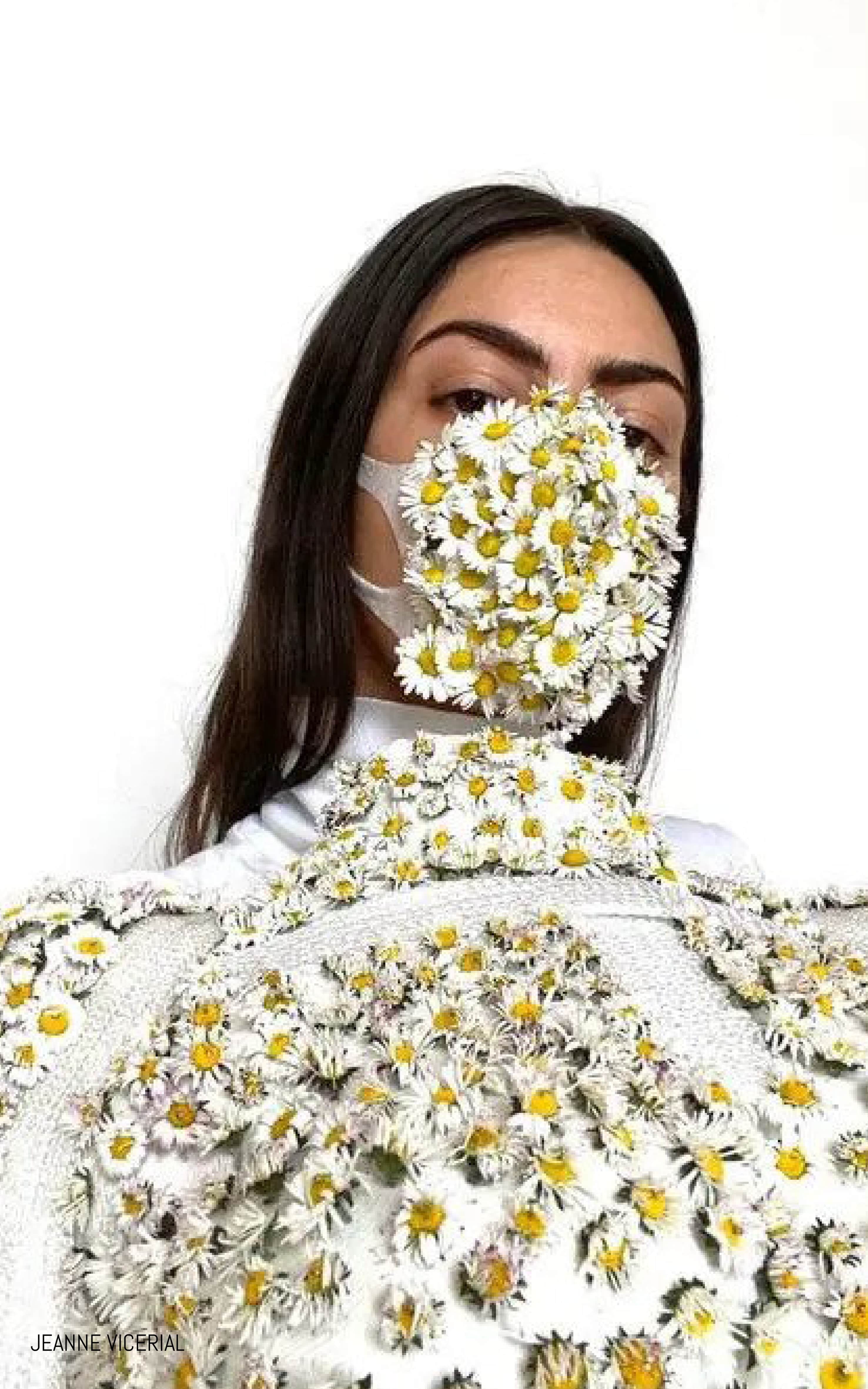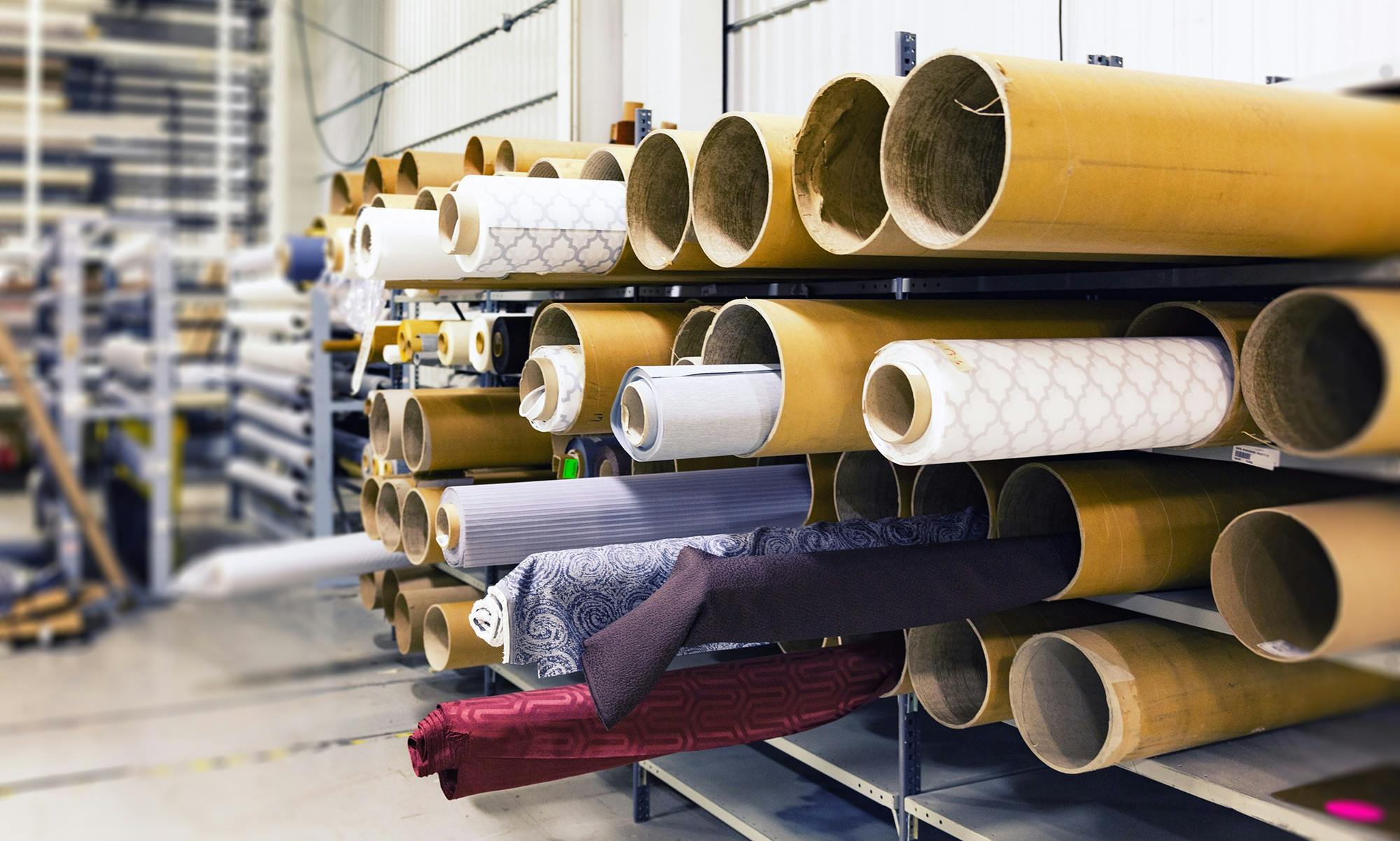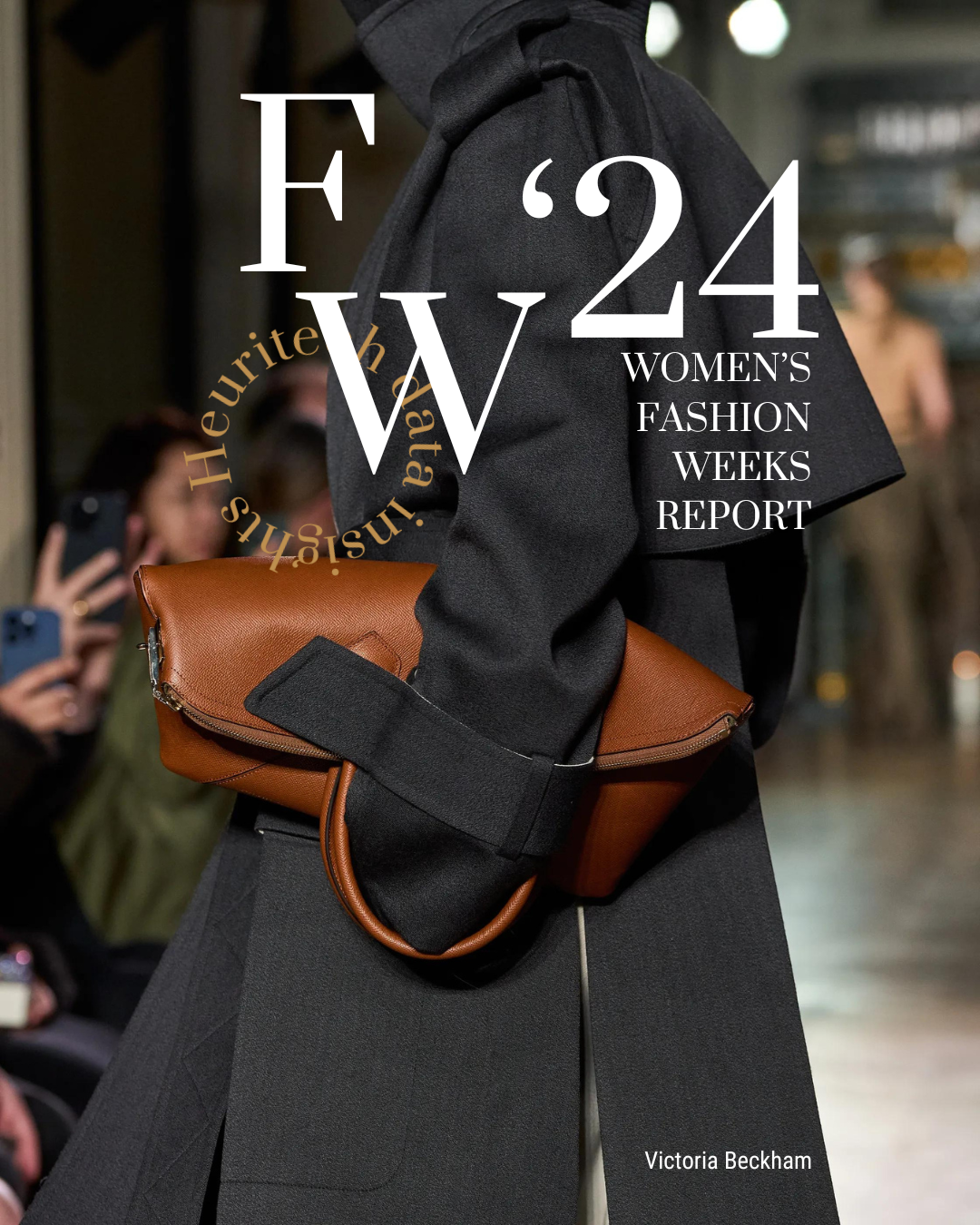Since the beginning of the pandemic, Instagram has experienced a 70% increase in traffic according to Facebook. Fashion brands as well as influencers have unsurprisingly upped their digital content and interaction with consumers on the platform to make use of this unprecedented, global quarantine. This bodes well for the average fashion consumer who, for the moment, cannot engage in traditional outside-of-the-home activities like window shopping or mall visits. As a result, Instagram has become more than ever a place where consumer expression runs honest and clear.
The rise of Covid-talk on Instagram
The buzzing topics on Instagram do a good job of documenting consumer sentiments along the course of Covid-19’s trajectory. Because the virus did not become widespread in Europe and the US until late February to early March, talk of the virus did not become widespread until around this time, either.
For example, since January at the first apparition of the hashtag, #coronavirus now stands at a total of 20 million posts according to the Instagram search. This is one of the fastest growths in popularity of a hashtag, indicating the relevance of the topic now still. Its popularity can also be explained by the boom in time spent on social media, and influencers are seeing increases in follower engagement.
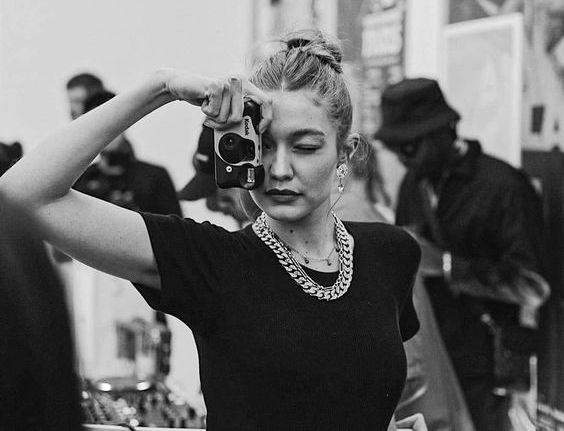
Around the world, influencers, brands, and fashion publications are talking about Covid-19, and their content is growing more diverse and optimistic as the weeks in confinement go on. As such, #coronavirus has been slowly decreasing since its peak in March.
So how exactly have consumers managed to turn #coronavirus into something more positive, and at times more fashion-oriented?
How do consumers feel about fashion during Covid-19?
The first place to look is to fashion influencers. While some are now posting casual indoor looks, others are still getting dressed up or posting old outfit photos to entertain and inspire their followers. Luxury fashion products are a valuable indicator of influencers’ rapport with fashion at the moment, with the visibility of luxury products on social media down by 40%.
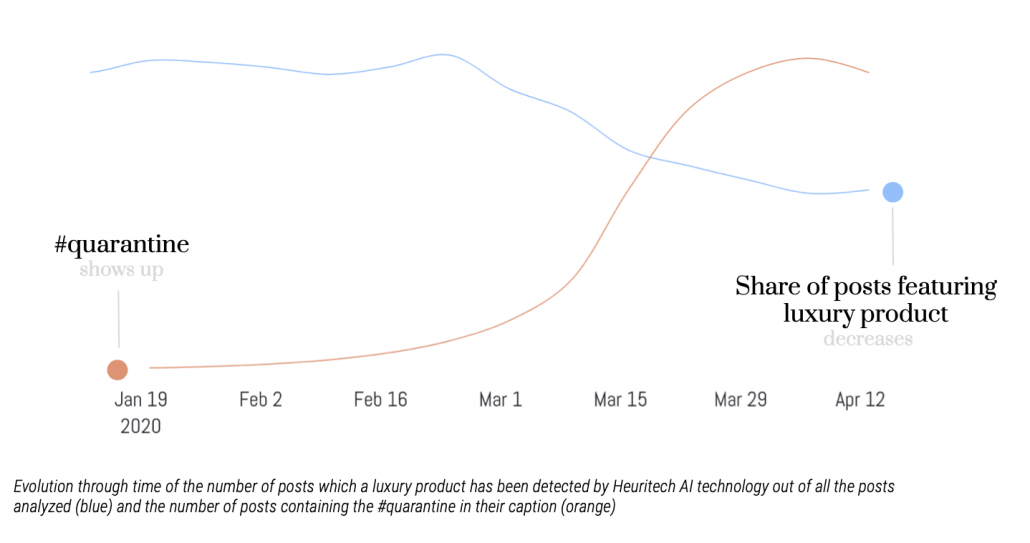
There is a clear drop in the number of luxury posts in March, largely due to the implementation of lockdown policies by countries. Around this same time, the number of posts featuring #quarantine skyrockets, marking the shift in focus from luxury content to perhaps more confinement-themed content.
Consumers at this moment in time seem to be more drawn to sweatpants than Chanel bags. What this means is that while consumer fashion preferences are shifting, they are not shifting away from fashion itself. Many have concerns about the economy and their incomes: for these reasons, times of crisis generally lead to reduced splurging from consumers. It’s only logical that luxury is temporarily stepping aside for more appropriate fashion trends, such as confinement-friendly loungewear and at-home exercise activewear.
Consumers are indeed maintaining an interest in fashion during Covid-19, albeit in creative new contexts. According to Heuritech’s Instagram analysis, over a quarter of posts are related to fashion in different ways: to promote an outfit, to share fashion projects, to show off one’s quarantine look, or to experiment with DIYs. Instagram influencers Camille Hurel and Estelle Chen, for example, have popularized #FashionWeekQuarantine to encourage their followers and fellow fashion lovers to show off their favorite looks, and even to donate to French hospitals.
So while many consumers are experiencing feelings of uncertainty, fashion is providing an escape from reality in a way that is creative and social online. Confinement, interestingly enough, has brought consumers to express hope for the industry’s future through creativity and new fashion trends.
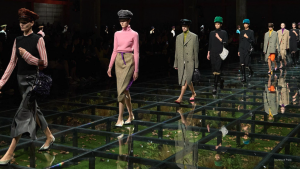
Additionally, consumers seem to be becoming more eco-conscious in their fashion habits. Instagram movements like the previously-mentioned DIYs, as well as the hashtag #wearyourwardrobe, are snapshots of this change in consumer attitudes. Covid-19 may be the watershed moment for sustainable fashion: according to Heuritech data, #sustainable has grown 5 times on Instagram in the last 3 years.
After years of activists raising awareness, it seems Covid-19 has ignited the spark, exposing the weaknesses of the industry and leading the average consumer to engage more with the planet through fashion. Consumers during this confinement are giving more attention to smaller, independent designers, buying less, and purchasing sustainably- made clothing. Thanks to consumers becoming more willing to make sacrifices for sustainable fashion, the post-Covid industry could literally mean greener pastures.
Buzzing hashtags on Instagram
In order to track the evolution of topics overlapping Covid-19 and fashion, Heuritech followed the most popular hashtags starting in January 2020. In the last few weeks in particular, the evolution in popularity of certain hashtags related to confinement has been growing at a very fast pace. For example, the number of posts with the hashtag #coronavid19 grew by 81% compared to the period before March 25th, which seems to have become a new way to talk about the virus. Other hashtags including #quarantinelife and #stayhomestaysafe reflect the primary position confinement is currently occupying in the minds of many consumers.
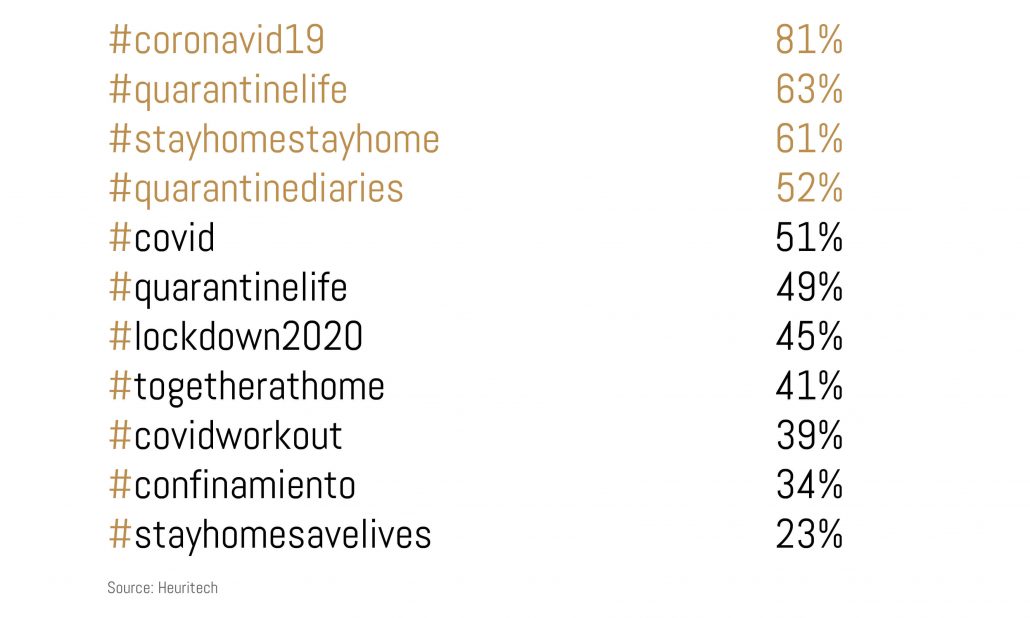
In order to rank hashtags which overlap the topics of Covid-19 and fashion, Heuritech quantified their popularity in volume, meaning their presence on Instagram among the posts analyzed. For example, according Heuritech data, #stayhome had the biggest presence on Instagram with 3.4% of posts, followed by #quarantine.
Topics relating to confinement such as #stayhome or #staysafe are widely used by consumers to demonstrate their involvement in fighting the spread of the virus. But influencers are often the ones pushing the narrative first: for example, popular fashion influencer @fabialamode is participating in the hashtag #ObviouslyforGood, a movement which emphasizes the importance of self-isolation during this time. Her followers are encouraged to follow advice from sources like the World Health Organization, as well as to donate to the front lines of Covid-19.
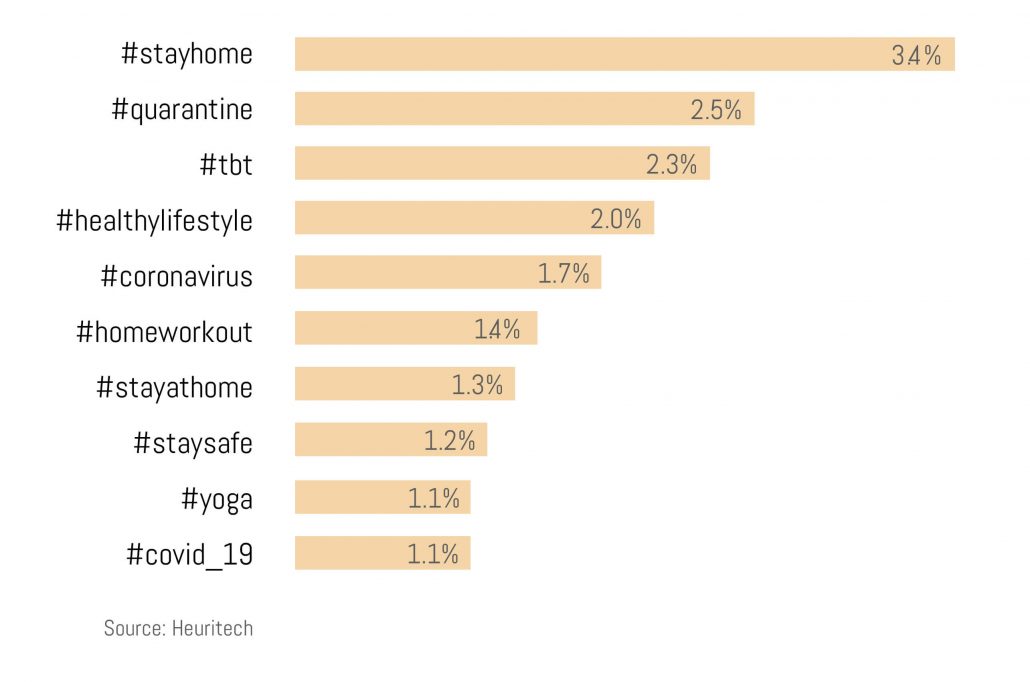
In this moment of uncertainty, the return to oneself seems to have once again become a common instinct. Indoor exercise has gone virtual to occupy the confined consumer. As a result, exercise-related hashtags are standing out, and 1 out of 4 posts related to Covid-19 refer to a healthy lifestyle in some way.
More zen activities such as yoga and meditation are growing in popularity as well, serving to reflect the sense of peace and control many consumers are hanging onto during this time. There have been 3 times more mentions of meditation since the beginning of quarantine, and #yoga ranks even above #covid_19 at the moment.
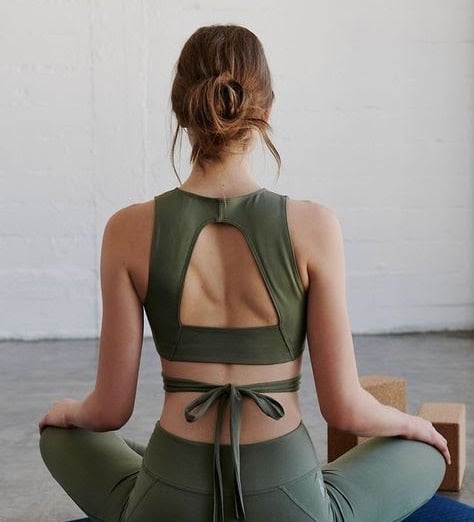
These attitudes translate into a feed of content displaying healthy activities, with users and influencers sharing their at-home activities. As such, direct influencer-to-consumer content has increased during confinement, as influencers like NYC-based Hanna Coleman are posting their home work-out routines, with the most popular ones even seeing a significant boost in engagement right now.
But social media can also serve for entertainment only, with the popular trend of nostalgic pictures accompanied by the hashtag #TBT, or Throwback Thursday. With the Met Gala having been canceled this year, for example, celebrities and everyday consumers alike went to Instagram to post their throwbacks and their would-be Met Gala outfits.
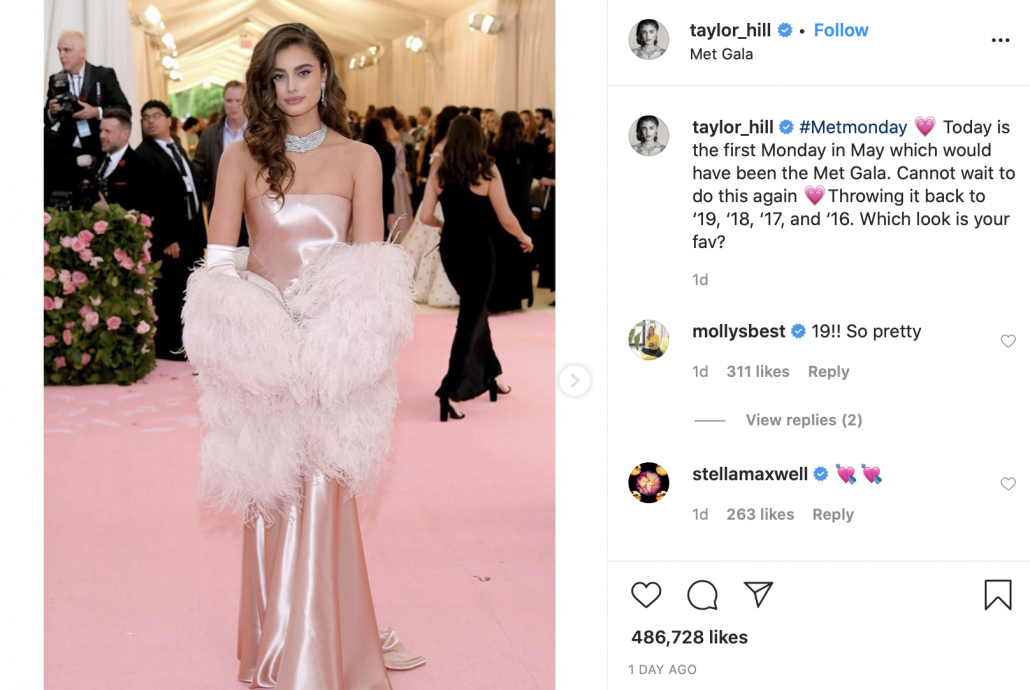
Covid’s lasting impact on consumer attitudes
Covid-19 has already changed consumer attitudes in a matter of months. Within the context of fashion in particular, it seems perspectives are shifting to accommodate the palpable disruption in the industry. People are demanding more intimate relationships with their favorite brands and influencers: on Instagram, popular movements include solidarity campaigns to help frontline workers, hashtags which promote creative, eco-conscious fashion trends, and at-home workouts to stay healthy during quarantine.
Indeed, #coronavirus and its many cousins have become a way to wield positivity for many fashion consumers and influencers. By analyzing Instagram in the context of Covid-19, Heuritech was able to gauge both the evolution and subcategories of consumer attitudes in the context of Covid-19 and fashion. The impacts of the pandemic will continue to be felt as time progresses, and the best thing fashion players can do is keep alert to the ebb and flow of their many loyal consumers.
